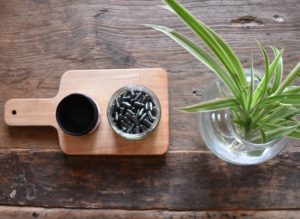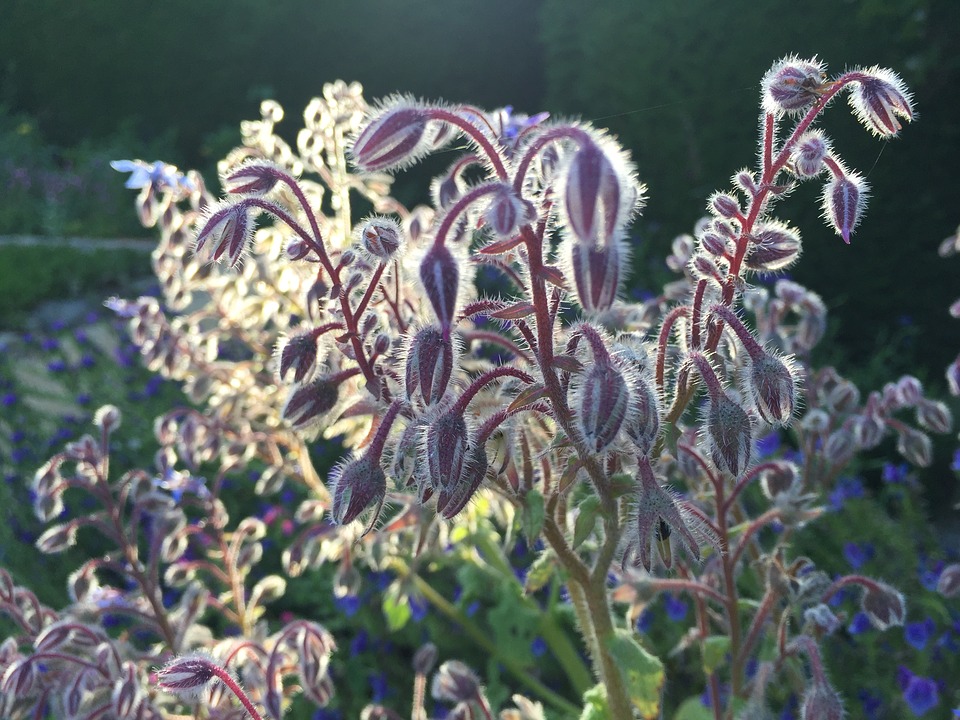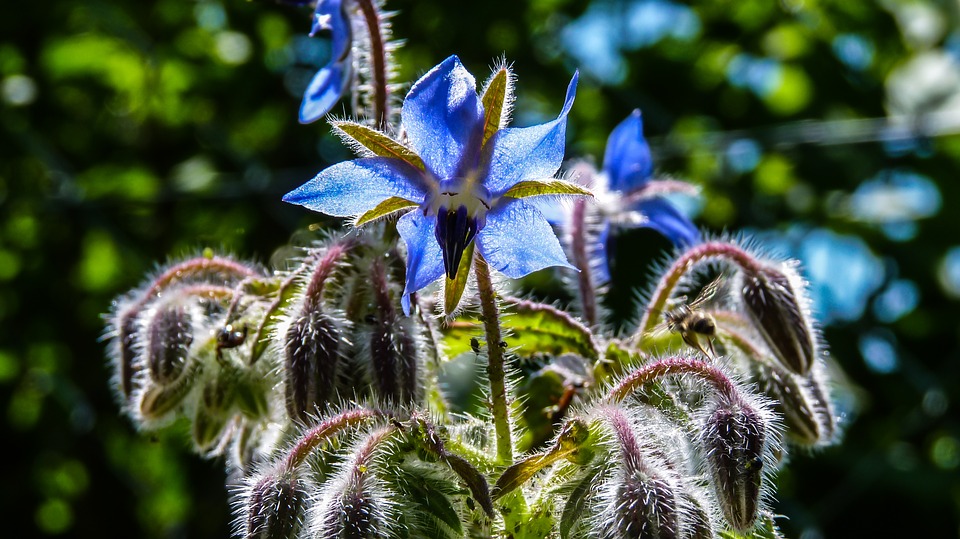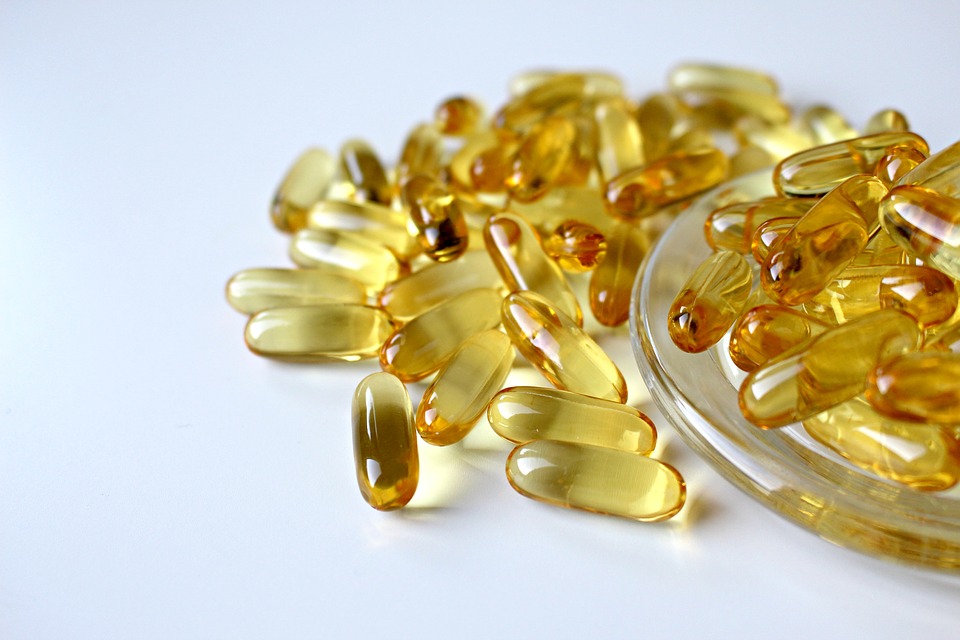In this article, I mention some of the properties of well-known supplements.
- Magnesium oil: a magnesium deficiency can be the cause of many discomforts including tiredness and a state of general exhaustion. The deficiency in mg is influenced by different factors: insufficient intake, increased needs, impossibility to absorb and use and cell leakage. Magnesium is a fundamental mineral for our body to function properly, it is essential for the muscular and nervous balance. One of its other major functions is to allow us to switch to the rest mode. In the absence of magnesium, the body remains perpetually blocked in action and it gradually becomes exhausted. Magnesium oil can be sprayed and massage onto the body or added to the water of a bath. It is best not to take any isolated chemistry in supplements.
- Himalayan salts: a bath can assist us in increasing our well-being. Other optional elements can be added to the bath: ground ginger, lemon, dried herbs (lavender, vanilla pod, flower petals), coconut oil, drops of essential oils (rose, chamomile, mint, lavender, rosemary), some clay.
- Activated charcoal: is an incredible absorbent agent. Anti-poison, it will fit in travel kits to cope with food poisoning, digestive disorder or transit irregularities. Its powder is obtained at very high temperature and in the absence of air by a long burning of residual vegetable organic matter (wood of trees such as willow, linden or poplar, coconut husks, olive stones). It is then activated during another heating operation, in the presence of vapor, in order to develop its porosity and a micro-pores network: it then becomes able to absorb impressive volumes of toxins. Thanks to this microporous structure, charcoal acts like a sponge and takes out of the body numerous poisoning agents (food additives, pesticide residues, heavy metals, drug wastes) which disturb the functioning of the intestine. Its action is said selective; it’s advised to listen to one’s body when there is a repulsion to consume charcoal as it was the case for me. It is not a plant, it’s not absorbed through the bowels. There is a possibility it becomes antagonistic and obstructive, as minerals in high acidic environment.

- The Daily Green Boost is a quality natural organic non GMO raw vegan supplement made from barsley grass grown in a certified organic farm in nutrient dense soil. 16 lbs of barsley grass are harvested with precision, cold-press juiced to remove the indigestible fiber, dried with a low temperature process and then stored in an amber glass bottle with no use of additives or preservatives. It’s a concentrate of trace minerals, plant-based vitamins, enzymes, chlorophyll and many phytonutriens. It has a high content in vitamin A, B6 and B12, K and C and is a source of iron, manganese, magnesium and molybdenum. It supports alkalinity and detox while fortifying the body. Its smell and taste are superior to other green powder and it goes well with sweet ripe fruits like bananas and dates in sandwich, smoothies (bananas, mangoes, dates, coconut water) and salads and salad dressings.




- Borage oil: in Europe, in the wild or in our gardens where she is easy to grow, the borage plant is recognizable by its pretty blue flowers forming a star shape. Its seeds are pressed to extract an exceptionally rich oil in gamma-linolenic acid, the highest rate in the vegetable world (20 to 24%) and fatty essential acids (saturated, monounsaturated and polyunsaturated). GLA is a regenerating and anti-inflammatory acid that greatly contributes to the beauty of the skin (elasticity, flexibility, vitality, tone). This oil limits the loss of water in the upper layers of the skin, helps keep the skin hydrated. It has a calming effect on rashes and redness, improves the dry and rough appearance in places where the skin is damaged, promotes healing and supports the action of zinc in acne problems. It will be a valuable ally to limit the risk of stretch marks for pregnant women or to prepare the skin for sun exposure. It is also very beneficial to strengthen the hair, emphasize their glare, stimulate their growth and limit the fall. Despite its beneficiary actions to regulate mood and the hormonal system (premenstrual symptoms and menopause, hot episodes), I do not recommend taking oil internally as they halt detoxification due to their effects on the lymphatic system. Applied on the tip of the hair (in small quantities to prevent them remaining greasy), it gave them a shine. Borage also brought courage to the Celts who called it borrach (“man of courage”). In addition to its mostly cosmetic applications, borage can also be used in organic floral elixir to restore confidence and support emotions of sorrow, sadness and discouragement. The therapeutic action of floral therapy is subtle and energetic, linking the plant psyche and the human psyche.




- Aloe Vera: is 99% water, it is in the last percent that it concentrates a synergy rich in nutrients, amino acids and vitamins. From the aloe vera come two very different substances with regard to their therapeutic properties. On the one hand, we find the juice, the latex, the yellow sap of the bark of the leaves whose molecules with laxative effects can relieve constipation, gastric or intestinal ailments (diverticulitis, colitis, Crohn’s disease, colic). On the other hand, the gel from the inner part of the leaves softens tissues. The latter is used in cosmetology and dermatology (the scar of minor skin lesions, treatment of psoriasis and genital herpes) and hair (root cleansing, repair of forks, fortification of the scalp). It stimulates the body’s natural defenses, cleans the blood, the digestive system and the urinary tract of toxins or residues adhering to the intestinal walls and ensures internal scaring by leaving a viscous film behind. Internal use as a gel or a juice cure can be made for a few weeks. In mouthwash, it regenerates mucous membranes. The use of preservatives and the presence of citric acid are detrimental to its properties. For applying it on the skin, the gel can be harvested if you have aloe vera plants or you often find some in organic stores. Cell regeneration is facilitated, healing of the skin and hydration accelerated.
- Birch sap: As winter is slowly ending, nature provides its purifying force, through the regenerating sap birch, a real wisdom tree. Freshly harvested in spring for centuries by the population of Northern Europe, birch sap has accumulated its precious nutrients during autumn. Spring is an ideal time to start a cure of sap thanks to its remineralizing, moisturizing and draining properties. It helps to clean and purify eliminative organs and to reject organic waste such as uric acid and cholesterol out of the body. The end of winter is the perfect time to get in touch with producers for the delivery of fresh birch sap. Ideally, we want to order from companies which take care of the trees by filling in the perforations with wooden dowels and clay. It is best if trees are left alone for the next 2 years.
- Royal jelly: Produced by bees to meet the needs of the queen and larvae, royal jelly is a condensate gift of life. Thanks to the nourishing properties of royal jelly, the queen lives up to 5 to 6 years (40 times longer than a normal bee) and receives the needed energy to lay over thousands of eggs each day. Man has observed nature to understand the impressive nutritional and vital potential in royal jelly. Used since antiquity by the Greeks and the Romans, it was a luxury food (because of its rarity) for the rich Chinese to support their longevity and sexual vigor. Adaptogen, the jelly fills the deficiencies, regulates metabolic problems and revitalizes the physiological functions. Natural tonic, it strengthens the immune system and protects from aggression. While it should be avoided by people allergic to bee products, it will be suitable for weakened or convalescent organisms. During a period of tiredness, jelly supplementation can support immune defenses and help to decrease stress through its action on the nervous balance. Its fortifying and stimulating action can help to keep up with energy during long days of mental activity. To make your choice when buying royal jelly, make sure to choose organic royal jelly (without pesticides, heavy metals or traces of antibiotics) and to check that it meets a charter of quality by guaranteeing the purity and the respect of bees: natural food for the bee (honey and pollen), guarantee in the durability and viability of swarms and stable preservation technique that does not affect its nutrients.
- Psyllium: in combination with charcoal and clay, are a great binder. Originally from India and Iran, traditionally used in China, and before that by Egyptian doctors, psyllium is essentially a set of fibers that acts as a broom through the digestive and intestinal tract, taking toxins out of the body. The seeds of psyllium (from the Greek psyllia which means “flea”) are tiny (the weight of 1000 seeds is less than 2 g). The mucilage it contains, a vegetable substance that swells when it gets in touch with liquids to become a viscous texture, gives psyllium its medicinal properties. During its journey through the body, psyllium forms a kind of gel that absorbs toxins, has a soothing action on inflamed tissues. Long stagnant materials in the colon are the preferred ground for the development of pathogens and intestinal parasites. Psyllium participates in bringing some residues out, in particular the mucoidal plaque which covers the walls of the intestines. Psyllium is not assimilated by the body: it finds the exit door accompanied by certain residues that should not be in the human body. Unlike other plant laxatives such as senna and buckthorn, psyllium has no stimulant effect on the mucous membranes. Black psyllium, on the other hand, is much more irritating. The many natural fibers of psyllium and the envelope of its seeds make it a good ally to regulate the intestinal transit for any disorder (colitis, constipation, diarrhea, inflammatory bowel diseases, etc.). It contains hemicellulose, an insoluble fiber that has the capacity to gorge with water and increase in size: psyllium can absorb several times its weight and its own volume in water. It has a regulating influence on the consistency of our stools. It can be added to smoothies or hot preparations (it can handle to be heated). A mixture of bentonite clay and activated charcoal can be used together with psyllium in the evening an hour after the last drink and meal. To avoid having to swallow the preparation in liquid form, the mixture can be thickened adopting the consistency of a “pudding” that can be eaten with a spoon (with pasteurized grape juice, cinnamon and honey).
- Baobab powder: massive, mythical and majestic is the Baobab, a tree of tropical Africa. For a long time, it has been used in different ways: its spongy wood to retain water, its bark for making ropes, its leaves for flour production and its pulp and seeds as traditional remedies. Its shell is rigid and the pulp, rich in nutrients, fibers and antioxidant and regenerating properties, is eaten fresh in African countries. On the European market, it is found in its dehydrated form. This powder is a concentrate in micronutrients: essential minerals (calcium, potassium, magnesium, zinc, phosphorus, manganese, iron), provitamin A and vitamins of group B and essential and non-essential amino acids. Baobab can be a great ally in case of deficiencies, detox and recovery process. Its content in hydrophilic antioxidants (vitamin C, bioflavonoids) and lipophilic (beta-carotene, alpha linoleum acid) slows down oxidation. Its soluble fibers make it a good prebiotic, with a restoring and regulating impact on the intestinal flora. A tea spoon of powder per day is a great help, incorporated into smoothies, the powder will add a tangy taste close to grapefruit.
- White mullein: originally from Europe and Asia, used for ages, white mullein has beneficial properties for the respiratory system and helps re-opening the compressed airways and brings some humidity back. Also known as the herb of Saint-Fiacre, all parts of this biennial plant can be used: flower (infusion, oily macerate), leaf (infusion) and root. Its assignments are multiple: irritation of the skin and mucous membranes of the mouth, respiratory affections (feeling of tightness, dry and cavernous cough, old unresolved dry cough), sore throats, engorgement of the lymph nodes. For those who want to stop smoking, tobacco can be cut with not too dry leaves (to avoid irritation). In local application, it calms itching sensations and skin or mouth irritation. It is rich in mucilage, complex sugars that form a protective mucilaginous gel on the mucous membranes. This way, the plant supports sputum. In herbal medicine, a 15-minute infusion (3 teaspoons) is prepared in a cup of boiling water with dried flowers (the mixture can carefully be filtered to avoid irritation).
- Saffron: helps to regulate and calm the nervous system. This red spice enhances preparations and recalls mysterious, fragrant, oriental, subtle and delicate notes. Saffron contains valuable medicinal properties. Before us, Greek, Roman, Egyptian and Eastern people were using it for various affections or for coloring their clothes and fabrics. Elsewhere, its culture requires a lot of patience. A large labor force is needed when picking hundreds of thousands of flowers. Stigmas go under pruning and drying operations to obtain saffron in its dry form. The bulb, buried at 15 cm, blooms into beautiful flowers in October: each of them has 6 purple petals, 3 yellow gold stamens and a red pistil, itself composed of 3 stigmas. During the pruning operation, the 3 red filaments of the pistil are extracted and then dried to be preserved as thoroughly as possible in order to preserve and concentrate their active compounds. There is still a great deal of mystery to be discovered in saffron. Up to now, only some of its 150 volatile and aromatic compounds have been identified and stand out. Crocin, a carotenoid, gives it its coloring power; it is still used to color Buddhist robes. Its carotenoids provide powerful antioxidants. Picrocrocine, another pigment, gives it its bitter aroma. It has insecticidal and pesticidal properties. While pigments play a role in stimulating digestion, the essential oil from terpenes safranal regulates the nervous system and neuromediators, helps to cope with insomnia and anxiety via its sedative effect. It acts as a natural antidepressant, regulating fatigue and assisting recovery. Saffron can be used to sublimate preparations (sweet, 1 pistil, salty, 2 pistils) by infusing it in a little water for 24 hours and adding it at the end of cooking. It can be taken in filaments (3) under the tongue in the morning to benefit from its regulating properties or it can be directly applied on painful gums (for its analgesic action). 9 stigmas can also be infused in a juice during the day or drunk before going to bed.
- Ginger: is a good regulator and calms the digestive system down. It is a natural stimulant and a natural solution to soothe motion sickness and states of nausea. Cultivated in sunny and tropical areas, mainly in Asia (India, China, Nepal) where Ayurvedic medicine respects it for its culinary and medicinal properties, ginger has lots of resources to help imbalanced organisms: digestive discomfort, discomfort when traveling (car, bus, boat), lack of energy, fatigue or immune weakness. Its vitamins (especially of the B group) and minerals (manganese, phosphorus, magnesium, calcium, sodium, iron) energize and fortify the body. It is a natural stimulant so is best not to be overused while detoxing. It has a “thermogenic” effect (which tends to produce heat). In herbal medicine, it is its rhizome, the underground part of the plant, which is used, a concentrated in vitality. We know well the firm and yellow pulp with stripes that is to be found inside, which serves as a reserve for the plant with its beneficial properties and ensures its good vitality. One of its main active compounds, gingerol, is a natural antioxidant. With shogaol, they have anti-inflammatory and protective effects for the intestinal transit (accelerated digestion). They help to facilitate a number of metabolic processes by stimulating the pancreas, the secretion of bile and the activity of various digestive enzymes (improving the assimilation of nutrients in the body). Ginger helps to maintain the intestinal flora in good condition, to digest fats and to calm or relieve the digestive system (spasms, gastritis, ulcers, heartburn, stomach lift). Ginger acts as an anti-emetic (stopping vomiting), reducing stomach movements, preventing or limiting nausea: a soothing solution for pregnant women, people suffering from motion sickness or convalescents in postoperative states. Infusions can be prepared or it can be grated or sliced: an infusion to help the lungs expectorate mucus: garlic (only once in a while because of its content in sulfur), onion, chili and ginger will sweep the lungs: chop 40 grams of ginger, 1 onion, 1 teaspoon of garlic and 2 small chilli peppers. Bring 250 ml of water to boil and add the ingredients at once, allowing the mixture to reduce to a thicker preparation and take a teaspoon at the time.
- Turmeric: known for millennia, turmeric root, an orange-yellow tuberous rhizome, is cooked, parched, peeled before being crushed into gold powder. In addition to its minerals and vitamins, turmeric is especially valuable for its curcuminoids, yellow dyes used in pharmaceutical (E100) and which are likely to stain work surfaces and everything it gets in touch with. Its main active compound, curcumin, slows down oxidative stress and the inflammatory process and the proliferation of abnormal cells. Its protective actions are non-negligible: natural antibiotic effect, body purifier, hepatic regenerator, blood fluidizer, natural fat burner, stimulating the secretion of bile. For a while I had the habit to add ½ coffee spoon of turmeric to my extracted or pressed juices before I realize its low bioavailability in this form. Indeed, turmeric reveals its strength when it is well associated. Curcumin being fat soluble, it looks like it’s important to mix it with a tiny bit of oil agent (I have stopped all fat consumption during detoxification as it can clog the lymphatic system up). Piperine of black pepper can incrementally potentiate its body assimilation. A thick paste can be prepared: in a saucepan to be warmed up gently (½ cup turmeric powder, 1 teaspoon of freshly ground pepper, a cup of filtered water). The mixture can then be stored for about a month in the fridge in a glass container (to avoid stains).
- Moringa powder: still unknown in Western Europe, a very high mineral and vitamin source, the green powder of moringa is a real health asset in terms of nutritive and therapeutic aspects. It is an excellent natural medicine: detoxifying, antioxidant, pain reliever, anti-fatigue, cardiovascular health and muscle mass supporter, stimulating the immune system, it also strengthens the joints. Moringa’s nickname is the miracle tree. Native to the sub-Himalayan regions of India, Pakistan, Bangladesh and Afghanistan, it is cultivated easily and cheaply as a medicinal plant. It is also found in South America and in the Caribbean or in tropical areas where its leaves are used to treat inflammation and wounds. For millennia, it has been proven to alleviate malnutrition. In the Philippines, its leaves, rich in iron, are frequently prescribed to treat anemia. Each part of the tree (leaves, bark, flowers, fruits, seeds and roots) can be used. I have tasted raw moringa leafs in Asia and fresh gotu kola leafs as well, these leafs help the liver and act as a dewormer, they are prepared as spinach leafs or they can be dried, thus preserving vitamins and minerals and then reduced to a powder that can be used as a condiment. Leaves are the most commonly consumed part. Rubbed against temples, they can help relieving headaches. Moringa helps the body to purify: it has anti-inflammatory, antibacterial, antifungal and antimicrobial properties. Research has demonstrated its protective effect against food microorganisms and contaminating fungi. It is particularly effective against cutaneous, urinary or digestive infections caused by various types of fungi and bacteria. In addition, it helps wounds to heal and supports collagen production. The high concentration of polyphenols in its leaves and flowers gives it hepatoprotection properties (oxidation, toxicity, liver damage). The concentration of zinc in its seeds and the chlorogenic acid it contains help regulate the level of sugar in the blood. Moringa leaf extract can also be used as a food preservative. If I came a cross this green powder, it was first of all because I was interested in the health of my gums and in search of the regenerative effect of moringa for my receding gums. Moringa can be drunk as an infusion (moringa leaf tea). I from time to time add it to a smoothie: it works very well (try half of a teaspoon first) with a mango-papaya-pineapple smoothie, it gives them a particular touch of taste. In the form of dried leaves, it can be added to soups. A poultice can be bathed in an infusion of moringa for fungal or bacterial skin problems. The very rich oil of its seeds is also used in the composition of cosmetics: it protects and beautifies hair and skin. Its content in vitamin A helps improve the health of the follicles and encourages hair growth.
- Ashwagandha: (“which smells like a horse” in Sanskrit) is an Indian root of a small yellow-flowered shrub of the solanaceous botanical family (just as tomato, potato, chilli pepper or tobacco). A rayasana (regenerating) plant of Ayurveda found in the dry and arid regions of India, North Africa, the Middle East and the United States, its extracts or powder prepared from the roots or leaves have been used for more than 3000 years in Ayurvedic medicine for their calming, warming, sexual tonic and fortifying properties. It is an adaptogenic tonic plant: it helps the body to regulate itself in the face of stressors without triggering hormonal reactions or slowing down the body’s normal functions. It is above all its alkaloids that play a major role in the active ingredients of the plant: somnin, somniferin, anferin and whitanolides. Some of its components are known as “steroids” and will help the body to naturally recover its vitality, while others have sedative virtues as their name suggests (somn-). One of the names of the plant is moreover “withania somnifera” in reference to its action favorable to a deep and regenerative sleep. Withanolides both stimulate the activation of lymphocyte immune cells, inhibit inflammation and support the endocrine system (especially the thyroid and adrenal glands) as well as the production of hormones while having an anxiolytic action by improving memory and reducing cortisol, a hormone released in response to physical or psychological stress. This regulation also prevents hair loss and general hair health (growth, maintenance of melanin levels, pigments responsible for hair color). Blood sugar levels are also stabilized, as are cholesterol and triglyceride levels. Mood is regulated thanks to an action that supports the nervous system. Ashwagandha contains another interesting active ingredient which is a kind of natural steroid, withaferin A, which soothes pain through an anti-inflammatory effect (e.g. in case of painful joints).
❣








